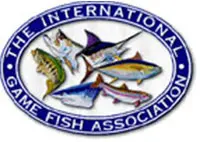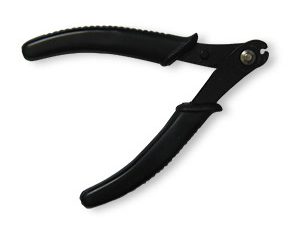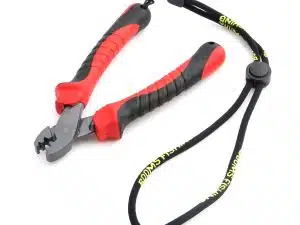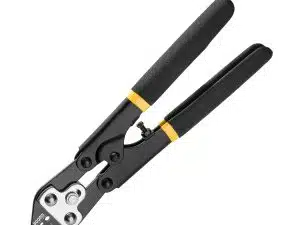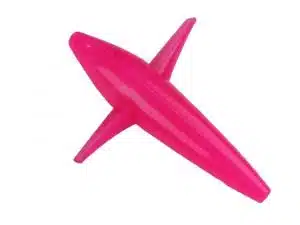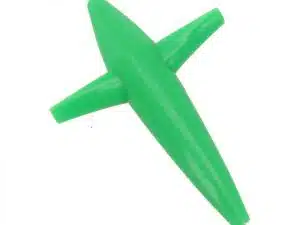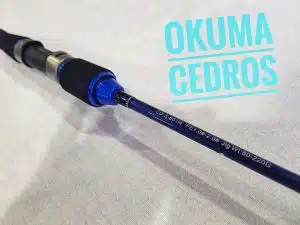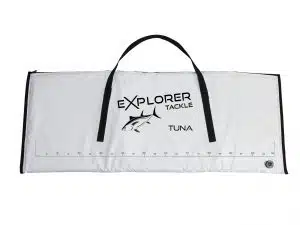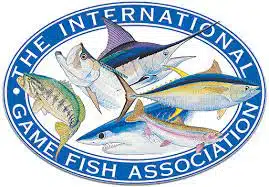IGFA International Angling Rules
The following angling rules have been formulated by the International Game Fish Association to promote ethical and sporting angling practices, to establish uniform regulations for the compilation of world game fish records, and to provide basic angling guidelines for use in fishing tournaments and any other group angling activities.
The word “angling” is defined as catching or attempting to catch fish with a rod, reel, line, and hook as outlined in the international angling rules. There are some aspects of angling that cannot be controlled through rule making, however. Angling regulations cannot insure an outstanding performance from each fish, and world records cannot indicate the amount of difficulty in catching the fish. Captures in which the fish has not fought or has not had a chance to fight do not reflect credit on the fisherman, and only the angler can properly evaluate the degree of achievement in establishing the record.
Only fish caught in accordance with IGFA international angling rules, and within the intent of these rules, will be considered for world records. Following are the rules for freshwater and saltwater fishing.
RULES FOR FISHING IN FRESH AND SALT WATER
(Also see Rules for Fly fishing)
:: Equipment Regulations ::
A. LINE
1) Monofilament, multifilament, and lead core multifilament lines may be used. For line classes, see World Record Requirements.
2) Wire lines are prohibited.
B. LINE BACKING
1) Backing not attached to the fishing line is permissible with no restrictions as to size or material.
2) If the fishing line is attached to the backing, the catch shall be classified under the heavier of the two lines. The backing may not exceed the 130 lb (60 kg) line class and must be of a type of line approved for use in these angling rules.
C. DOUBLE LINE
The use of a double line is not required. If one is used, it must meet the following specifications:
1) A double line must consist of the actual line used to catch the fish.
2) Double lines are measured from the start of the knot, braid, roll or splice making the double to the farthermost end of the knot, splice, snap, swivel or other device used for securing the trace, leader, lure or hook to the double line.
Saltwater species: In all line classes up to and including 20 lb (10 kg), the double line shall be limited to 15 feet (4.57 meters). The combined length of the double line and leader shall not exceed 20 feet (6.1 meters).
The double line on all classes of tackle over 20 lb (10kg) shall be limited to 30 feet (9.14 meters). The combined length of the double line and leader shall not exceed 40 feet (12.19 meters).
Freshwater species: The double line on all classes of tackle shall not exceed 6 feet (1.82 meters). The combined length of the double line and the leader shall not exceed 10 feet (3.04 meters).Now here are the IGFA regulations that are of most interest to us in the area of leader construction.
D. LEADER
The use of a leader is not required. If one is used, it must meet the following specifications: The length of the leader is the overall length including any lure, hook arrangement or other device. The leader must be connected to the line with a snap, knot, splice, swivel or other device. Holding devices are prohibited. There are no regulations regarding the material or strength of the leader.
Saltwater species: In all line classes up to and including 20 lb (10 kg), the leader shall be limited to 15 feet (4.57 meters). The combined length of the double line and leader shall not exceed 20 feet (6.1 meters).
The leader on all classes of tackle over 20 lb (10 kg) shall be limited to 30 feet (9.14 meters). The combined length of the double line and leader shall be limited to 40 feet (12.19 meters).
Freshwater species: The leader on all classes of tackle shall be limited to 6 feet (1.82 meters). The combined length of the double line and leader shall not exceed 10 feet (3.04 meters).

Double lines are measured from the start of the knot, braid, roll or splice making the double to the farthermost end of the knot, splice, snap, swivel or other device used for securing the trace, leader, lure or hook to the double line. For saltwater species the double line shall be limited to 15 feet (4.57 meters ) for all line classes up to and including 20 lb (10 kg ); and shall be limited to 30 feet (9.14 meters ) for line classes over 20 lb (10 kg ). For freshwater species the double line on all classes of tackle shall not exceed 6 feet (1.82 meters ).

The leader shall be limited to 15 feet (4.57 meters ) for saltwater species in line classes up to and including 20 lb (10 kg ), and 30 feet (9.14 meters ) for all line classes over 20 lb (10 kg ). For freshwater species the leader on all line classes of tackle shall be limited to 6 feet (1.82 meters ).

The length of the leader is the overall length, including any lure, hook arrangements or other device.





The combined length of the double line and leader shall not exceed 20 feet (6.1 meters ) in line classes up to and including 20 lb (10 kg ), and 40 feet (12.19 meters ) in line classes over 20 lb (10 kg ) for saltwater species. The combined length of the double line and leader shall not exceed 10 feet (3.04 meters ) for freshwater species.
E. ROD
1) Rods must comply with sporting ethics and customs. Considerable latitude is allowed in the choice of a rod, but rods giving the angler an unfair advantage will be disqualified. This rule is intended to eliminate the use of unconventional rods.
2) The rod tip must be a minimum of 40 inches (101.6 cm) in length. The rod butt cannot exceed 27 inches (68.58 cm) in length. These measurements must be made from a point directly beneath the center of the reel. A curved butt is measured in a straight line. (The above measurements do not apply to surf casting rods.)
F. REEL
1) Reels must comply with sporting ethics and customs.
2) Power driven reels of any kind are prohibited. This includes motor, hydraulic, or electrically driven reels, and any device which gives the angler an unfair advantage.
3) Ratchet handle reels are prohibited.
4) Reels designed to be cranked with both hands at the same time are prohibited.
G. HOOKS FOR BAIT FISHING
1) For live or dead bait fishing no more than two single hooks my be used. Both must be firmly imbedded in or securely attached to the bait. The eyes of the hooks must be no less than a hook’s length (the length of the largest hook used) apart and no more than 18 inches (45.72 cm) apart. The only exception is that the point of one hook may be passed through the eye of the other hook.
2) The use of a dangling or swinging hook is prohibited. Double or treble hooks are prohibited.
3) A two-hook rig for bottom fishing is acceptable if it consists of two single hooks on separate leaders or drops. Both hooks must be imbedded in the respective baits and separated sufficiently so that a fish caught on one hook cannot be foul-hooked by the other.
4) A photograph or sketch of the hook arrangement most accompany all record applications made for fish caught on two-hook tackle.


NOT LEGAL as back hook is not firmly imbedded in or securely attached to the bait, and is a dangling or swinging hook.
LEGAL as both hooks are firmly imbedded or securely attached to the bait. Would not be legal if eyes of hooks were more than 18 inches (45.72 cm) apart
H. HOOKS AND LURES
1) When using an artificial lure with a skirt or trailing material, no more than two single hooks my be attached to the line, leader, or trace. The hooks need not be attached separately. The eyes of the hooks must be no less than an overall hook’s length (the overall length of the largest hook used) apart and no more than 12 inches (30.48 cm) apart. The only exception is that the point of one hook may be passed through the eye of the other hook. The trailing hook may not extend more than a hook’s length beyond the skirt of the lure. A photograph or sketch showing the hook arrangement must accompany a record application.
2) Gang hooks are permitted when attached to plugs and other artificial lures that are specifically designed for this use. Gang hooks must be free swinging and shall be limited to a maximum of three hooks (either single, double, or treble, or a combination of any three). Baits may not be used with gang hooks. A photograph or sketch of the plug or lure must be submitted with record applications.

LEGAL if eyes of hooks no more than 18 inches (45.72 cm) apart in baits, and no more than 12 inches (30.45 cm) apart in lures. NOT LEGAL if eyes further apart than these distances.

NOT LEGAL as the second trailing hook extends more than the hook’s length beyond the skirt. See also two hook rigs.

NOT LEGAL in bait or lures as eyes of hooks are less than hook’s length (the length of the largest hook) apart.

LEGAL as eyes of hooks are no less than a hook’s length apart, and no more than 18 inches (45.72 cm) apart in baits, and no more than 12 inches (30.45 cm) apart in lures.

LEGAL in baits and lures. The point of one hook is passed through the eye of the other hook

LEGAL if eyes of hooks no more than 18 inches (45.72 cm) apart in baits, and no more than 12 inches (30.45 cm) apart in lures. NOT LEGAL if eyes further apart than these distances.

LEGAL as hook is contained within the skirt.

NOT LEGAL as the single hook extends more than its length beyond the skirt.
I. OTHER EQUIPMENT
1) Fighting chairs may not have any mechanically propelled devices which aid the angler in fighting a fish.
2) Gimbals must be free swinging, which includes gimbals that swing in a vertical plane only. Any gimbal that allows the angler to reduce strain or to rest while fighting the fish is prohibited.
3) Gaffs and nets used to boat or land a fish must not exceed 8 feet (2.44 meters) in overall length. In using a flying or detachable gaff the rope may not exceed 30 feet (9.14 meters). The gaff rope must be measured from the point where it is secured to the detachable head to the other end. Only the effective length will be considered. If a fixed head gaff is used, the same limitations shall apply and the gaff rope shall be measured from the same location on the gaff hook. Only a single hook is permitted on any gaff. Harpoon or lance attachments are prohibited. Tail ropes are limited to 30 feet (9.14 meters). (When fishing from a bridge, pier, or other high platform or structure, this length limitation does not apply.)


4) Entangling devices, either with or without a hook, are prohibited and may not be used for any purpose including baiting, hooking, fighting, or landing the fish.
5) Outriggers, downriggers, spreader bars and kites are permitted be used provided that the actual fishing line is attached to the snap or other release device, either directly or with some other material. The leader or double line may not be connected to the release mechanism or with the use of a connecting device. Spreader bars are also acceptable when used strictly as a teaser.
6) Daisy chains, birds, floats and similar devices may only be used if they do not unfairly hamper or inhibit the normal swimming or fighting ability of the fish, thereby giving the angler or crew an unfair advantage in fighting, landing or boating the fish.
7) A Safety line may be attached to the rod provided that it does my way assist the angler in fighting the fish.
:: Angling Regulations ::
1) From the time that a fish strikes or takes a bait or lure, the angler must hook, fight, and land or boat the fish without the aid of any other person, except as provided in these regulations.
2) If a rod holder is used and a fish strikes or takes the bait or lure, the angler must remove the rod from the holder as quickly as possible. The intent of this rule is that the angler shall strike and hook the fish with the rod in hand.
3) In the event of a multiple strike on separate lines being fished by a single angler, only the first fish fought by the angler will be a world record.
4) If a double line is used, the intent of the regulations is that the fish will be fought on the single line most of the time that it takes to land the fish.
5) A harness may be attached to the reel or rod, but not to the fighting chair.The harness may be replaced or adjusted by a person other than the angler.
6) Use of a rod belt or waist gimbal is permitted.
7) When angling from a boat, once the leader is brought within the grasp of the mate, or the end of the leader is wound to the rod tip more than one person is permitted to hold the leader.
8) One or more gaffers may be used in addition to persons holding the leader. The gaff handle must be in hand when the fish is gaffed.
9) The angling and equipment regulations shall apply until the fish is weighed.
The following acts will disqualify a catch:
1) Failure to comply with equipment or angling regulations.
2) The act of persons other than the angler in touching any part of the rod, reel, or line (including the double line) either bodily or with any device, from the time a fish strikes or takes the bait or lure, until the fish is either landed or released, or in giving any aid other than that allowed in the rules and regulations. If an obstacle to the passage of the line through the rod guides has to be removed from the line, then the obstacle (whether chum, floatline, rubber band, or other material) shall be held and cut free. Under no circumstances should the line be held a touched by anyone other than the angler during this process.
3) Resting the rod in a rod holder, on the gunwale of the boat, or any other object while playing the fish.
4) Handlining or using a handline or rope attached in any manner to the angler’s line or leader for the purpose of holding or lifting the fish.
5) Shooting, harpooning, or lancing any fish (including sharks and halibuts) at any stage of the catch.
6) Chumming with or using as bait the flesh, blood, skin, or any part of mammals other than hair or pork rind used in lures designed for trolling or casting.
7) Using a boat or device to beach or drive a fish into shallow water in order to deprive the fish of its normal ability to swim.
8) Changing the rod or reel while the fish is being played.
9) Splicing, removing, or adding to the line while the fish is being played.
10) Intentionally foul-hooking a fish.
11) Catching a fish in a manner that the double line never leaves the rod tip.
12) Using a size or kind of bait that is illegal to possess.
13) Attaching the angler’s line or leader to part of a boat or other object for the purpose of holding or lifting the fish.
14) If a fish escapes before gaffing or netting and is recaptured by any method other than as outlined in the angling rules.
The following situations will disqualify a catch:
1) When a rod breaks (while the fish is being played) in a manner that reduces the length of the tip below minimum dimensions or severely impairs its angling characteristics.
2) Mutilation to the fish, prior to landing or boating the catch, caused by sharks, other fish, mammals, or propellers that remove or penetrate the flesh, (Injuries caused by leader or line, scratches, old healed scars or regeneration deformities are not considered to be disqualifying injuries.) Any mutilation on the fish must be shown in a photograph and fully explained in a separate report accompanying the record application.
3) When a fish is hooked or entangled on more than one line.
-
BIG GAME FISHING CRIMPING TOOLS
ROUND SLEEVE CRIMPING PLIERS
£13.50 Incl. UK VAT (VAT Free outside UK) Add to basket -
BIG GAME FISHING CRIMPING TOOLS
LIGHT DUTY HAND SWAGER
£22.50 Incl. UK VAT (VAT Free outside UK) Add to basket -
BIG GAME FISHING LURES
TRACKER MINI TROLLING BIRD 5″
£3.45 Incl. UK VAT (VAT Free outside UK) Select options -
BIG GAME FISHING LURES
TRACKER TROLLING BIRD 7″
£5.95 Incl. UK VAT (VAT Free outside UK) Select options -
FULL RANGE
OKUMA CEDROS SLOW PITCH JIGGING ROD CD-S-601M
£159.50 Incl. UK VAT (VAT Free outside UK) Add to basket -
BIG GAME FISHING LURES
SIDE TRACKER TROLLING BIRD
£19.50 Incl. UK VAT (VAT Free outside UK) Select options -
BOAT FISHING ACCESSORIES
INSULATED FISH BAG – MEDIUM
£89.50 Incl. UK VAT (VAT Free outside UK) Add to basket

